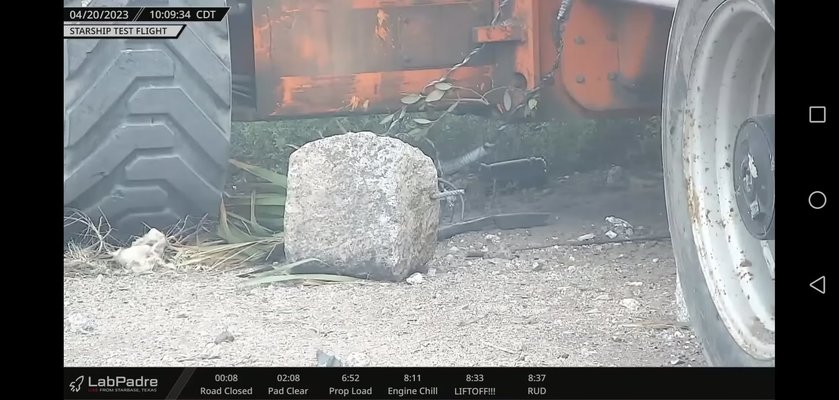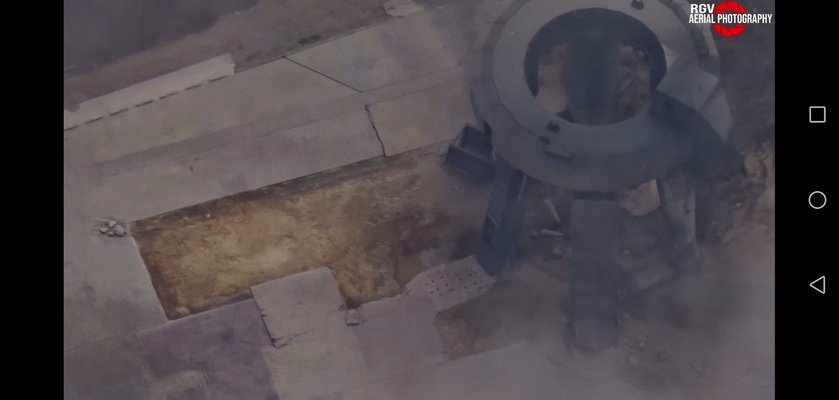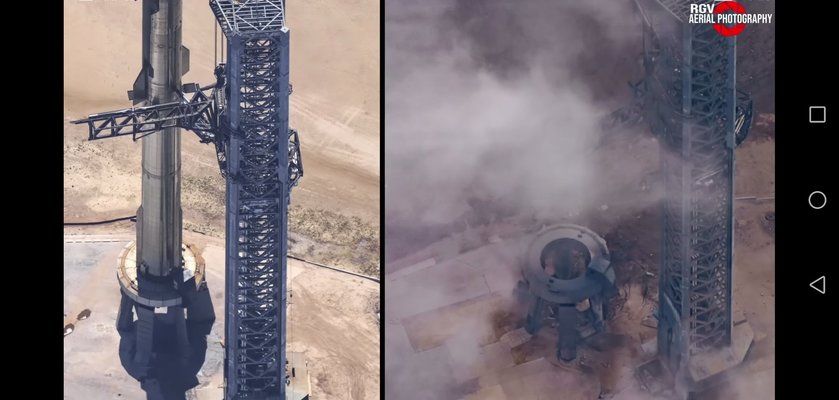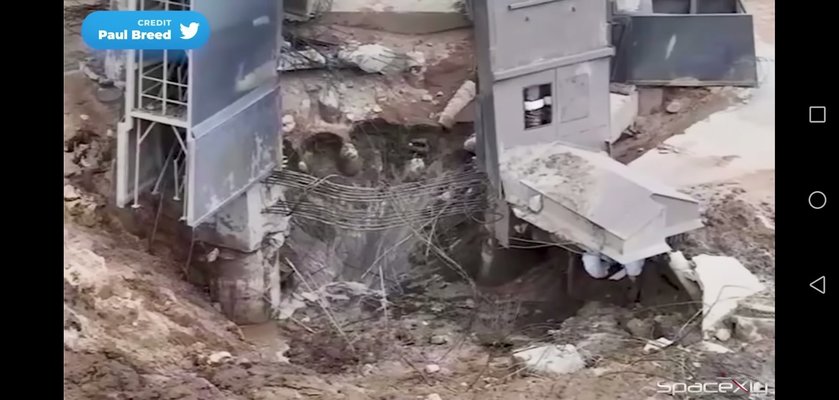You are using an out of date browser. It may not display this or other websites correctly.
You should upgrade or use an alternative browser.
You should upgrade or use an alternative browser.
Big SpaceX Launch Today?
- Thread starter Ross365
- Start date
mike os
just a little insane.....
- Messages
- 9,652
- Location
- North Wales
It went bang because they would have destroyed it as soon as it was out of control ... from the video it appears to loose normal flight shortly before it went ... I don't think it self destructedOf course there is always the possibility that the reason it went bang, was that it achieved MaxQ to quickly...........
Pigeon_Droppings2
Member
- Messages
- 6,658
- Location
- london
They use a trial/error approach...if a trial exceeds a previous trial then they'll consider it a success.
They expect the failures...no failures would mean they aren't taking enough risk!
It's just a very different development approach...but if you want people to keep taking risks then you need to accept their failures...hence the cheering!
Project managers have a very hard time with it I can tell you!
They expect the failures...no failures would mean they aren't taking enough risk!
It's just a very different development approach...but if you want people to keep taking risks then you need to accept their failures...hence the cheering!
Project managers have a very hard time with it I can tell you!
Wildefalcon
Member
- Messages
- 2,575
- Location
- Gloucestershire, England
3m, the company that makes the PPE, babe an awards ceremony every quarter.
They give prizes for the best invention, all that sort of thing, but they also give an award, with cash, for the biggest disaster, the worst idea, because if you don't have bad ideas, and if you don't have failures, then you aren't trying hard enough.
They give prizes for the best invention, all that sort of thing, but they also give an award, with cash, for the biggest disaster, the worst idea, because if you don't have bad ideas, and if you don't have failures, then you aren't trying hard enough.
daedalusminos
Member
- Messages
- 2,388
- Location
- Norwich
The fact it cleared the tower was a great achievement - if they'd destroyed the launch pad it would have been a major setback. At least one person miscalculated the sheer amount of debris created during launch...
Bullet2012
Member
- Messages
- 5,234
- Location
- on average about 200 miles from the ISS.
Do you know what would really suck?
A rocket powered vacuum cleaner!
A rocket powered vacuum cleaner!
mike os
just a little insane.....
- Messages
- 9,652
- Location
- North Wales
These things are built as close to the material and component failure limit as they can be... once they get into flight bodies. Unfortunately that means you get to test everything to destruction sooner or later .... having tested all the sub assemblies you then get to do it all again with the final product
Cad/cam/fea and rigorous testing still fails to show every potential issue..
All that failed appears to be part of the separation sequence... a line of code a faulty switch a bad connection a bit of ice .... a failed actuator?
Do they still use explosive bolts ?
Cad/cam/fea and rigorous testing still fails to show every potential issue..
All that failed appears to be part of the separation sequence... a line of code a faulty switch a bad connection a bit of ice .... a failed actuator?
Do they still use explosive bolts ?
Wildefalcon
Member
- Messages
- 2,575
- Location
- Gloucestershire, England
I suspect the 6 engine failures caused it the corkscrew, so that there was too much twist for the separation to work.
Wildefalcon
Member
- Messages
- 2,575
- Location
- Gloucestershire, England
How about a jet powered blower?Do you know what would really suck?
A rocket powered vacuum cleaner!
Sergei Slovenija
Member
- Messages
- 1,256
- Location
- Slovenija Ljubljana
I read somewhere that the locks of the rocket and the ship should open, after a small forced impulse, to rotate the ship itself. And not during a pause, when all the engines are off.These things are built as close to the material and component failure limit as they can be... once they get into flight bodies. Unfortunately that means you get to test everything to destruction sooner or later .... having tested all the sub assemblies you then get to do it all again with the final product
Cad/cam/fea and rigorous testing still fails to show every potential issue..
All that failed appears to be part of the separation sequence... a line of code a faulty switch a bad connection a bit of ice .... a failed actuator?
Do they still use explosive bolts ?
Pigeon_Droppings2
Member
- Messages
- 6,658
- Location
- london
Seems likely that the engine damage skuppered the flight as they may have lost full control.
Wonder if it was damage from the pad...so maybe nothing on starship went wrong!
Wonder if it was damage from the pad...so maybe nothing on starship went wrong!
Last edited:
Sergei Slovenija
Member
- Messages
- 1,256
- Location
- Slovenija Ljubljana
The rocket made an aerobatics "dead loop" like an airplane. Engine thrust was enough. The problems started at the separation stage. I saw a poor quality photo, where on the launch pad, nothing was left of the concrete, only a pit. If so, you need reinforcement. After the last test of the engines, the concrete was changed to high-strength. It is not clear to me, as a novice welder, why not cover the launch pad with sheets of armor or other heat-resistant steel, in the "tile" format.Seems likely that the engine damage skuppered the flight as they may have lost full control.
Wonder if it was damage from the pad...so maybe nothing on starship went wrong!

mike os
just a little insane.....
- Messages
- 9,652
- Location
- North Wales
Plume temp is itro 2500c I guess.... nasa used huge volumes of water to help minimise damage iircThe rocket made an aerobatics "dead loop" like an airplane. Engine thrust was enough. The problems started at the separation stage. I saw a poor quality photo, where on the launch pad, nothing was left of the concrete, only a pit. If so, you need reinforcement. After the last test of the engines, the concrete was changed to high-strength. It is not clear to me, as a novice welder, why not cover the launch pad with sheets of armor or other heat-resistant steel, in the "tile" format.
Bullet2012
Member
- Messages
- 5,234
- Location
- on average about 200 miles from the ISS.
True, most of the “smoke” from a NASA launch is actually clods of steam from the water used to cool the pad.Plume temp is itro 2500c I guess.... nasa used huge volumes of water to help minimise damage iirc
Sergei Slovenija
Member
- Messages
- 1,256
- Location
- Slovenija Ljubljana
Sergei Slovenija
Member
- Messages
- 1,256
- Location
- Slovenija Ljubljana
For a stainless rocket - a deck made of stainless tiles, like a domed shell, with a small radius. Tiles have the possibility of displacement (heating-cooling-warping). From the inside, in the gap of the sheets, water is supplied. It takes 78 kJ of energy to melt 1 kg of steel. Issues of ablation, wear from a supersonic jet, shock waves - this is rocket science.


Pigeon_Droppings2
Member
- Messages
- 6,658
- Location
- london
Can certainly see how the engines might have taken a hit that's for sure...all that debris flying around.
Impressive that it made it off the pad!
Impressive that it made it off the pad!









